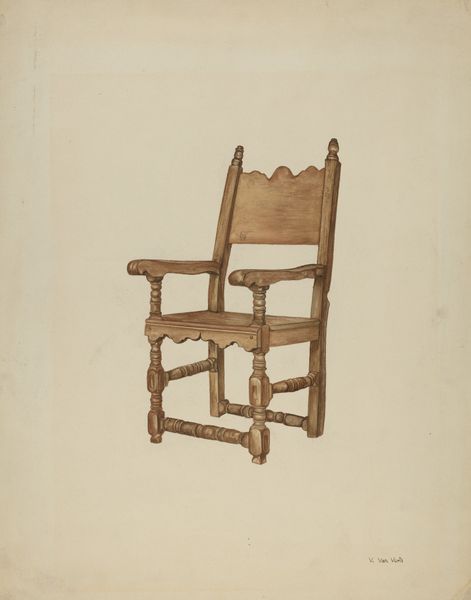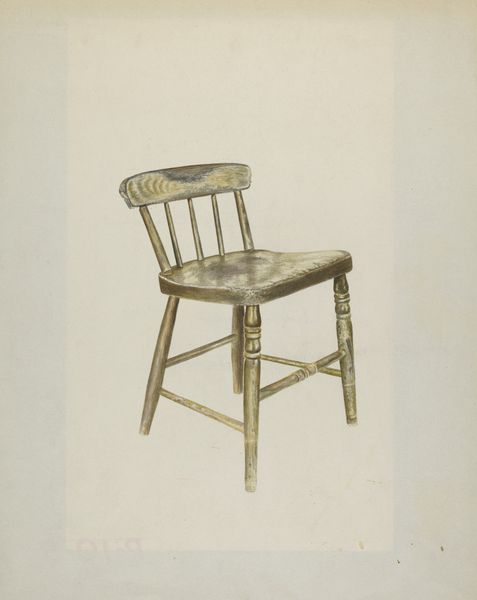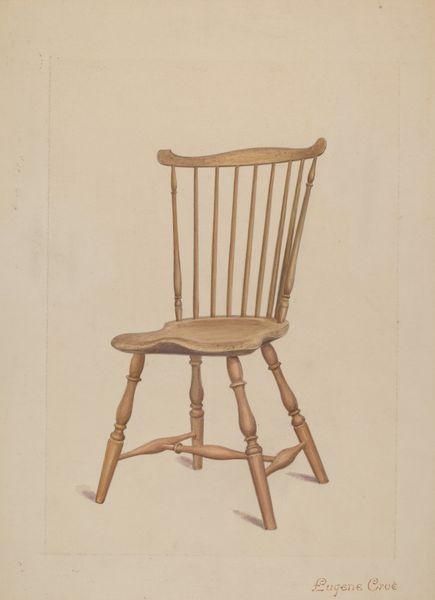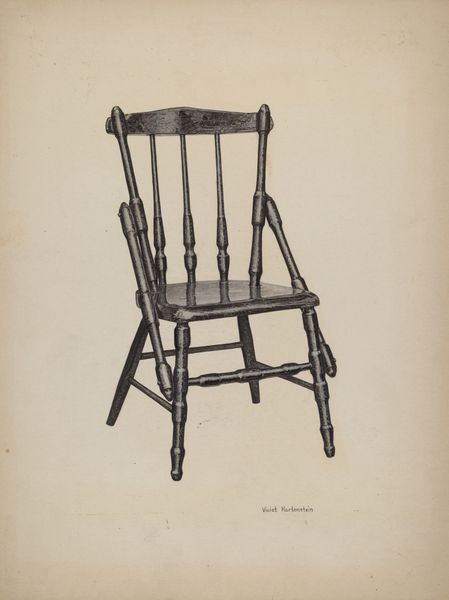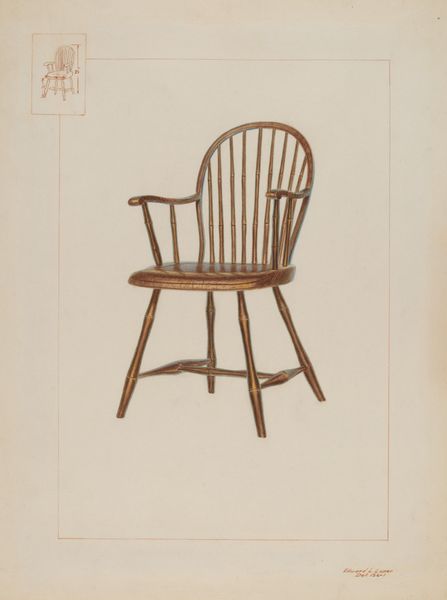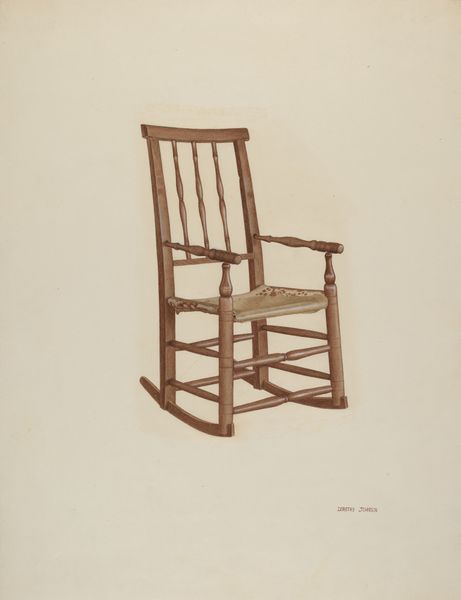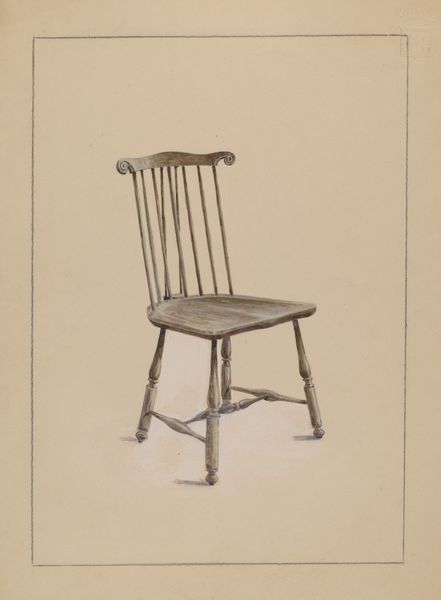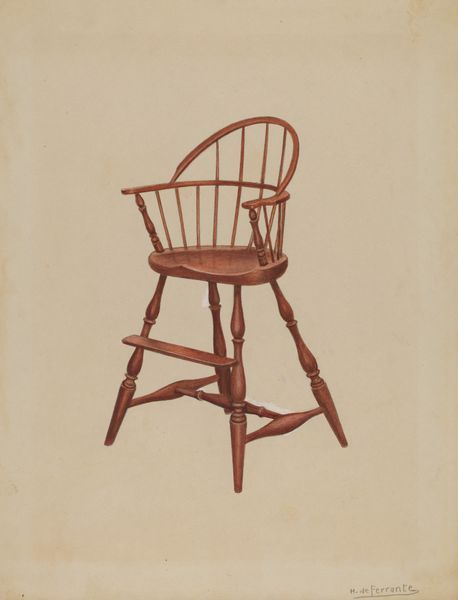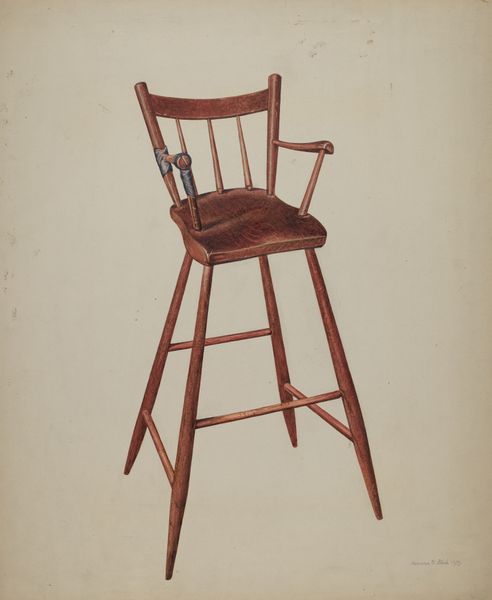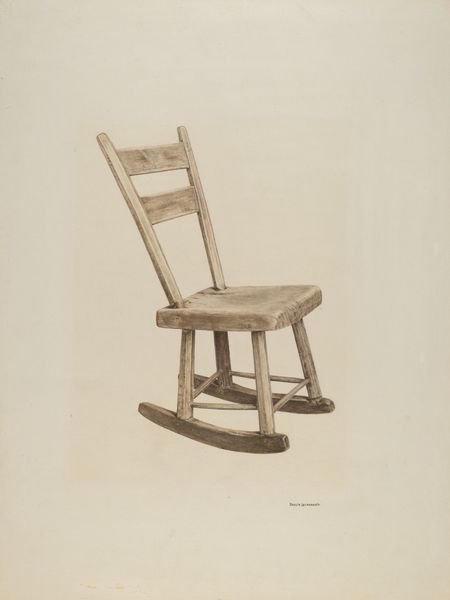
drawing, coloured-pencil
#
pencil drawn
#
drawing
#
coloured-pencil
#
charcoal drawing
#
coloured pencil
Dimensions: overall: 48.9 x 36.6 cm (19 1/4 x 14 7/16 in.) Original IAD Object: 36 1/2"high overall. 13"wide at seat. Seat 24"high. See d.s. for dets.
Copyright: National Gallery of Art: CC0 1.0
Editor: Here we have Raymond Chard’s "High Chair," created around 1939 using drawing and coloured pencil techniques. It has such a quaint, vintage feel. What strikes me is how much attention is given to a humble, everyday object. What do you make of it? Curator: It’s tempting to see it as simply nostalgic, but I think we need to consider the context of 1939. As Europe edged closer to war, and the US recovered from the Depression, domesticity gained complex, often contradictory significance. Can we view this image as a desire for safety and innocence rooted in a colonial conception of the "ideal" family? Who exactly, in that moment, gets access to these seemingly harmless structures? Editor: That's fascinating! I hadn't considered that at all. So, it's less about the chair itself and more about what it represents during that time period? Curator: Exactly! Consider the labour, both physical and emotional, implied by this object. A high chair presupposes care, nurture, but also enforced social expectations onto children and the individuals taking care of them. We should really think critically about who provided that care, under which circumstances, and within what power dynamics. It wasn't, and isn't, apolitical. Editor: So, even an innocuous image like this can prompt questions about societal roles and power structures? It's really changed how I see the piece. Curator: Precisely. It encourages us to unravel assumptions about comfort, security, and even the very concept of childhood itself. Editor: I'll never look at a high chair the same way again! Thanks for pointing that out! Curator: Absolutely! And perhaps that slight discomfort is precisely what art should do; incite questioning of the accepted norms of everyday life.
Comments
No comments
Be the first to comment and join the conversation on the ultimate creative platform.
